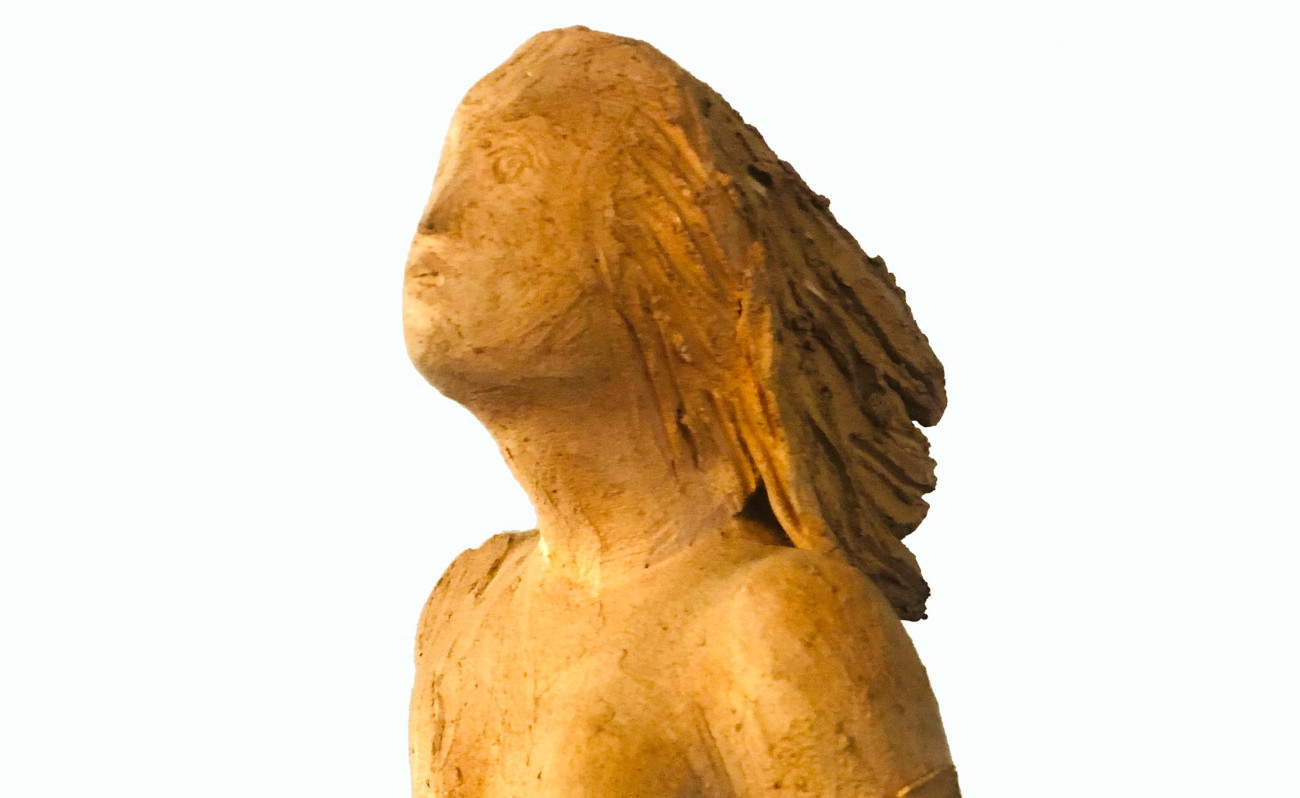On Friday, February 9 at 5:30 p.m., on the occasion of the presentation of Arturo Martini ’s Ophelia in the permanent collection rooms of the Museo Novecento in Florence, an event entitled Ophelia. From Shakespeare to Arturo Martini.
After many years, the work is donated on loan to the Museo Novecento to be displayed in the halls of the Alberto della Ragione collection. It is Arturo Martini’sOphelia, a sculpture whose traces had been lost in the 1930s and which today will enrich the nucleus of works by theTreviso artist present on the second floor of the former Leopoldine. Purchased by Mario Castelnuovo-Tedesco in 1931, the work remained hidden in Florence with the arrival of the racial laws in 1937, which led the Florentine composer and his family to flee to the United States. It was after the death of the composer in 1968 and his wife Clara in 1989 that Ophelia took the road to the United States. Ophelia returned to Italy for the first time in 2021, on the occasion of an exhibition organized by the Museo Novecento Arturo Martini and Florence, dedicated to the relationship between the great sculptor and the city. The sculpture, purchased in recent years from private collectors, can now be on public display, thanks to Castelnuovo-Tedesco’s heirs who expressed their desire to have Ophelia returned to Italy, especially to a Florentine museum.
"It is wonderful that Arturo Martini’sOphelia returns to the Museo Novecento to be exhibited to the public among the works of the permanent collection," commented Deputy Mayor and Councillor for Culture Alessia Bettini. “A significant contribution to the artistic heritage of the museum and the city, which is enriched with an extraordinary work by the Treviso artist, confirming the strong link between Martini and Florence and the Novecento Museum’s increasingly central role in preserving and sharing with art and culture lovers works of great relevance.”
"It has been a beautiful return journey that of Arturo Martini’s Ophelia in recent years, after the sad and dramatic reasons that in many respects caused the museum to lose track of it in the dark days of the arrival of the racial laws enacted by Fascism in 1937," said Museo Novecento director Sergio Risaliti. "We are grateful to the heirs of Castelnuovo-Tedesco who decided to make this masterpiece by Arturo Martini available to generous collectors with one constraint, that the beautiful, poignant terracotta figure of Ophelia would end up in the collections of a museum, and so it did. We also thank Lucia Mannini for tracking down the work in 2021 on the occasion of the Arturo Martini and Florence exhibition and initiating the relationship with Castelnuovo-Tedesco’s heirs. We thank the private owners of now, passionate art lovers, for embracing that imperative and deciding to donate, on long-term loan, Ophelia after purchase. These are extremely important steps for multiple reasons: including giving centrality to the growth of the civic collections with valuable works, enriching the presence of Arturo Martini’s works in the museum itinerary, and having become a museum of reference in the promotion of modern and contemporary art nationally and internationally."
To celebrate the return of Ophelia, the Museo Novecento organized the event Ophelia. From Shakespeare to Arturo Martini, a meeting in which the figure of Ophelia will be explored in depth, from art history to cinema, with readings of excerpts from Shakespeare performed by singer-songwriter and historian Letizia Fuochi along with speeches by art historian Lucia Mannini, who traced Arturo Martini’sOphelia in the United States for the 2021 exhibition, and Sergio Risaliti, director of the Museo Novecento.
The event will be introduced by Dr. Ilaria Nerli with a presentation on the figure of Ophelia in art: starting with the representation of the latter in John Everett Millais’ famous work “Ophelia,” the story will continue through representations of the Shakespearean character in film, literature and photography.
In the Shakespearean play Hamlet, Ophelia is the daughter of the royal chamberlain Polonius and sister of Laertes. In Shakespeare’s tragedy, poor Ophelia is a secondary character, in love with Prince Hamlet and reviled by her father and brother about the nature of her relationship with the prince of Denmark. After the death of her father at the hands of Hamlet and the distance of her brother Laertes, Ophelia goes mad and dies by drowning in a river. Over time, the figure of Ophelia has become a symbol of the heartbreak of unrequited love and one of the most widely represented Shakespearean characters ever in the history of art and beyond.
Arturo Martini has chosen to shape Ophelia as she is described in the fifth scene of Act IV of Shakespeare’s play, the character’s most mysterious and disturbing moment when she begins to take the path of madness. Everything about her figure speaks of a journey with no return. Arturo Martini’sOphelia is an earthy refractory figure, the slender, elongated body of a teenage girl results tilted by a momentum that is not only that of her gait, but seems to come from within, as a reaction to a condition of openly spiritual malaise.
Free admission to the event while places last.

 |
| Arturo Martini's Ophelia donated on loan to Florence's Museo Novecento |
Warning: the translation into English of the original Italian article was created using automatic tools. We undertake to review all articles, but we do not guarantee the total absence of inaccuracies in the translation due to the program. You can find the original by clicking on the ITA button. If you find any mistake,please contact us.